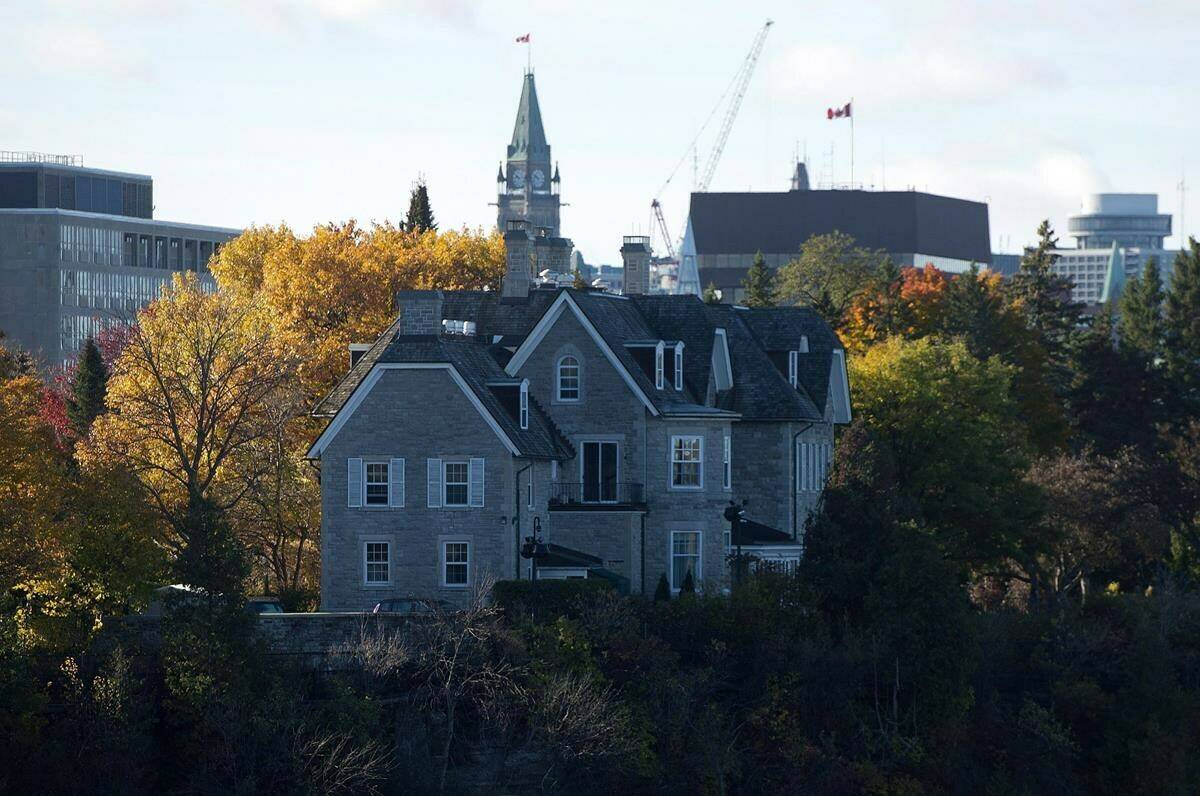Almost a year before the closure of 24 Sussex Drive due to disrepair and an infestation of rodents, the chairman of the National Capital Commission’s board of directors warned that further delaying a cabinet decision on the fate of the residence would put the whole structure at risk.
The mansion, which sits on a prime riverfront property a few kilometres from Parliament Hill, served as the home for Canada’s prime ministers between 1950 and 2015.
Concerns about the deteriorating state of the building prompted Prime Minister Justin Trudeau and his family to move into a different official residence after he was elected. For nearly eight years, they have lived at Rideau Cottage, which is on the grounds of nearby Rideau Hall.
Since then, the federal Liberal cabinet has continually deferred making a decision about whether to restore the heritage property.
It’s seen as a bit of a political quagmire. In 2018, Trudeau remarked that no prime minister wanted to spend taxpayer dollars on 24 Sussex.
READ MORE: PM’s official residence becoming a costly ‘debacle,’ say Conservatives
In January 2022, the NCC board’s chairman Marc Seaman wrote to Filomena Tassi, the then-public services and procurement minister, “expressing concern around the delay of a cabinet decision beyond December 2021 on the future of 24 Sussex Drive.”
The concerns are detailed in a briefing note from the Privy Council Office, the administrative arm of the federal cabinet. It was obtained by The Canadian Press under access-to-information laws.
In the letter itself — sections of which have been redacted — Seaman said he wants to convey “the board’s strong view that continued deferment … carries real risks to both the physical integrity of the building itself and our ability to execute our fiduciary responsibility as stewards of this most important classified heritage building on behalf of all Canadians.”
The property had been used for outdoor receptions in the years since 2015, and staff were still using some rooms.
But in July, Seaman informed the government of the commission’s plans to close the residence entirely, saying the work that needed to happen “by no means pre-empts any future decisions by the federal government regarding the use and purpose of the residence.”
Last fall, a rodent infestation, worries that electrical issues could start a fire and outstanding water damage, among other issues, led the commission to determine that 24 Sussex now posed a health and safety risk to the remaining staff who worked there. The building was officially shuttered to remove aged systems and asbestos.
It will remain closed for at least the next year, after contractors moved in last week to begin that work, according to commission spokeswoman Valérie Dufour. The project is budgeted to cost $4.3 million.
Officials blame the deterioration of the 34-room mansion on consecutive governments’ unwillingness to spend money on repairing and performing proper upkeep of the house, which was first built in 1868.
A spokesman for Public Services and Procurement Minister Helena Jaczek, who replaced Tassi in the role last August, said Thursday it continues to work with the commission “to develop a plan for the future of 24 Sussex Drive.”
The commission has said the federal government is reviewing options for the property, which sits on more than two hectares and includes a 12,000-square foot main house with 34 rooms, a pool house and two security guard kiosks.
A draft report titled “Revitalizing the Official Residence of the Prime Minister of Canada” — also released to The Canadian Press through access laws — shows that the commission offered the government a series of specific options, including a recommended approach and a list of pros and cons.
However, all the details about those options are redacted.
The documents also identify issues with the home beyond its crumbling physical state. The layout and security measures do not pass muster to serve as a modern prime minister’s residence, which is meant to host international guests and various events, they suggest.
“It is limited in its ability to support official functions and day-to-day activities, with poor accessibility, insufficient-sized rooms and lack of support spaces,” such as barrier-free washrooms, reads one document.
It goes on to say that while roughly 20 per cent of the space is designed for the prime minister and family to live in, privacy is an issue.
“There is no clear separation between the private and official spaces,” it says.
A 2021 report from the commission on the state of its assets said there was $36 million worth of deferred maintenance to complete at 24 Sussex, not including security or other infrastructure upgrades.
Stephanie Taylor, The Canadian Press

